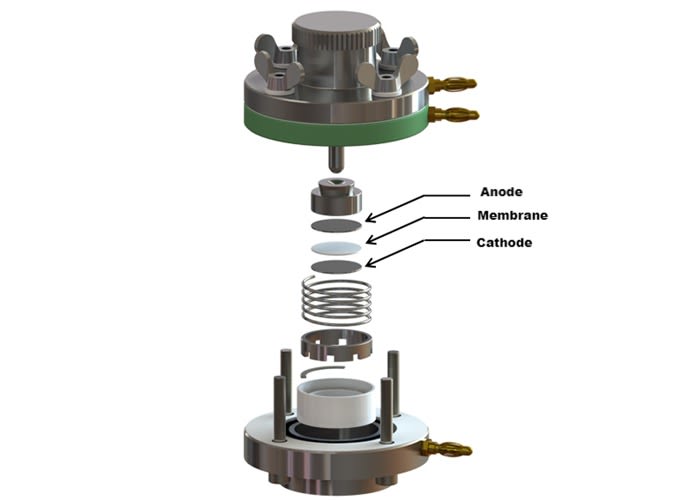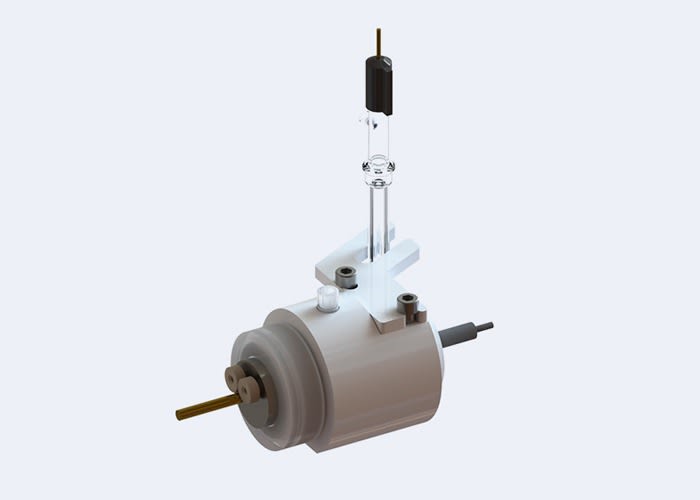
Battery Test Cell
The Battery Test Cell is a reusable electrochemical platform for in-situ analysis of rechargeable battery materials. It replicates coin/pouch environments with precision sealing enabling charge-discharge cycling, impedance testing and OCP monitoring.
Description
Principle of Operation
The Battery Test Cell is a reusable electrochemical test platform designed for in-situ and operando analysis of rechargeable battery materials. It replicates the working environment of a coin or pouch cell while providing a controlled, measurable configuration for studying electrode and electrolyte interfaces. By integrating precision mechanical sealing and electrical isolation, the cell enables quantitative electrochemical testing such as charge–discharge cycling, impedance spectroscopy, and open-circuit potential monitoring.
The core principle lies in creating a sandwiched electrode–separator–electrolyte assembly between a current collector pair under uniform pressure. When connected to a potentiostat or battery cycler, the electrochemical reactions occurring inside the test cell are monitored to understand ion transport, electrode kinetics, and degradation mechanisms.
Key Features & Specifications
- Construction: High-purity stainless-steel body for mechanical stability and corrosion resistance.
- Insulation: PEEK or PTFE insulation prevents short-circuits and chemical interactions with electrolytes.
- Sealing System: Airtight O-ring configuration prevents electrolyte leakage and moisture intrusion.
- Electrode Compatibility: Supports round electrode discs up to φ16 mm (custom sizes optional).
- Ease of Assembly: Reusable screw-type closure design with uniform compression for reproducible results.
- Pressure Control: Spring-loaded assembly ensures consistent contact pressure across the electrode surface.
Compatibility
The cell interfaces seamlessly with potentiostats, battery cyclers, and electrochemical workstations for advanced testing, including galvanostatic cycling, cyclic voltammetry, and electrochemical impedance spectroscopy (EIS). It can be coupled with in-situ XRD, Raman spectroscopy, or synchrotron beamlines for structural or spectroscopic correlation studies.
Typical Applications
- Evaluation of new cathode and anode materials (e.g., Li-ion, Na-ion, Mg-ion systems).
- Electrolyte formulation and SEI (solid-electrolyte interface) characterisation.
- Cycle-life testing and degradation mechanism analysis.
- Solid-state battery research and ionic conductivity measurements.
- Academic and industrial R&D for energy-storage materials and interfaces.
Customer Reviews
Related Product
Explore our precision instruments designed for electrochemical research and energy applications
Still Wondering About Something?
Explore our FAQ for fast, clear answers to the most common questions—available 24/7.





